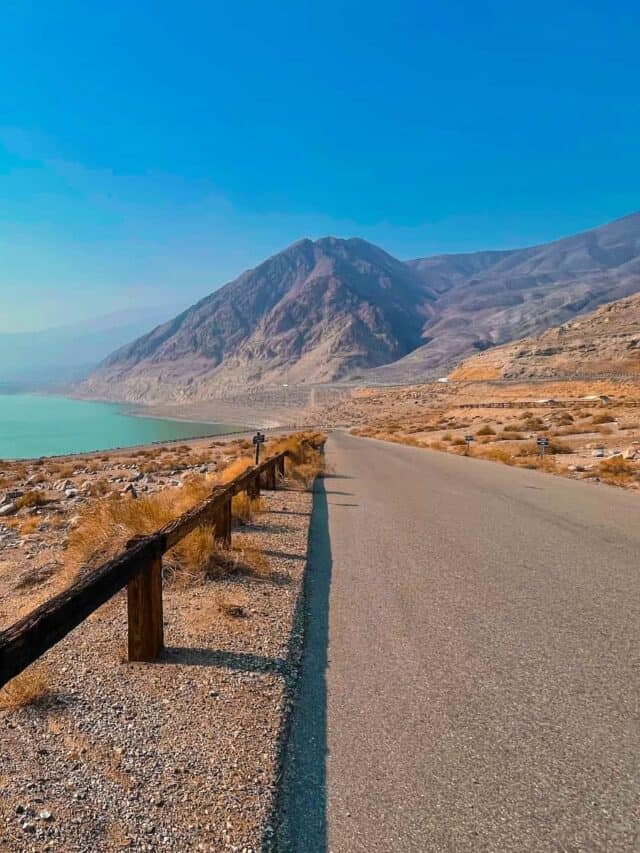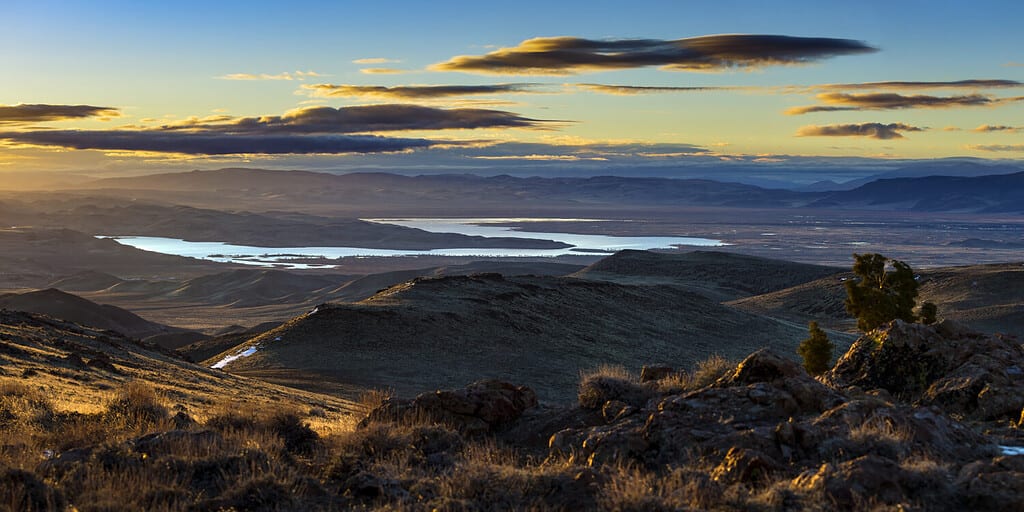Nevada is a state known for its striking landscapes, vibrant cities, and diverse wildlife. Among the many unique species that call Nevada home is the Lahontan cutthroat trout – the official state fish of Nevada. This iconic fish has a storied history in the region, having once been abundant in many waterways across the Great Basin before being nearly wiped out by overfishing and habitat destruction. However, thanks to decades of conservation efforts and stocking programs, populations of this beautiful fish have rebounded in recent years. As summer approaches and temperatures rise, anglers from all over will be flocking to Nevada’s rivers and streams in search of Lahontan cutthroat trout. In this article, we’ll explore some of the best places to catch these elusive fish throughout the state so that you, too, can experience firsthand what makes them such an important part of Nevada’s natural heritage.
What is the Official State Fish of Nevada?

The Lahontan cutthroat trout or Oncorhynchus clarkii (subspecies henshawi) is a unique species of fish that has been named the official state fish of Nevada. This subspecies of cutthroat trout was once found in abundance throughout the Great Basin region, but due to overfishing and habitat destruction, their populations have significantly declined over the years.
Lahontan cutthroat trout are easily recognizable by their distinct features. They have a pink line along the body, dark copper to green hues, and many spots. In streams, they tend to be small and show vivid colors and many spots. Those found in lakes usually appear silvery. The most noticeable trait is the bright red slash under their jaw, which is a characteristic feature of all cutthroat species. This summer, why not take a trip to Nevada and see if you can catch one of these unique fish?
Can You Catch Them?
The Lahontan cutthroat trout, known for its beautiful red-orange markings and unique genetic makeup, is an iconic species in Nevada. However, due to overfishing and habitat destruction, the population of this fish has greatly declined in recent years. Despite being listed as endangered under the Endangered Species Act, anglers in Nevada still have the opportunity to catch this prized fish in certain areas.
However, it is crucial that fishermen practice catch-and-release methods when fishing for the Lahontan cutthroat trout. This not only ensures that there will be enough fish for future generations to enjoy but also helps protect this already vulnerable species from further harm.
Native to the Humboldt, Snake, and Bonneville basins of western North America, this subspecies of cutthroat trout can be found primarily in 112 streams and a few lakes throughout Nevada. By designating it as the official state fish of Nevada, officials are emphasizing pride in their natural heritage and highlighting ongoing protection efforts aimed at preserving these incredible creatures.
In conclusion, while catching a Lahontan cutthroat trout may provide an exciting experience for anglers visiting Nevada’s watersheds this summer season – it’s important that we all work together towards conservation efforts that maintain healthy populations of these majestic creatures long into the future.
Where to Catch One

There are five lakes in Nevada full of Lahontan trout.
©iStock.com/Christopher Thienel
The Lahontan cutthroat trout is a prized catch for many anglers looking to reel in some of northern Nevada’s finest fish. As a native species, these fish can be found in various locations throughout the region, including cold-water habitats such as large alkaline lakes and alpine lakes. Slow-moving rivers also provide ideal environments for these trout, as do small tributary streams.
For those eager to try their luck at catching one of Nevada’s state fish, there are several areas within Elko, Humboldt, and Nye counties that have streams with high concentrations of these fish. In total, the Lahontan Basin is home to 123-129 streams where you can find Lahontan cutthroat trout living alongside other aquatic wildlife. Additionally, there are five lakes containing this species – two of which are Summit and Independence Lakes.
Despite changes in habitat over time due to human intervention or natural occurrences like droughts or floods, self-sustaining populations make up about 10% of historic stream habitats, and just less than half a percent (0.4%) of lake habitats remain intact today.
If you’re planning on visiting northern Nevada anytime soon and want to enjoy some quality fishing while taking in the beautiful scenery, look no further than the Nevada state fish.
History of Nevada’s State Fish
The Lahontan cutthroat trout is a remarkable fish that has been native to the tributaries of an ancient lake called Lake Lahontan for thousands of years. This unique species has evolved and adapted over time, making it one of the most fascinating creatures in Nevada’s waterways.
During the ice age, Lake Lahontan shrank down to a couple of remnants, including Walker Lake. Despite these changes, the Lahontan cutthroat trout thrived in their habitat. They grew up to 40 inches long and were known to devour chub and other fish. These trout remained at the top of the food chain for many years, thanks to their ability to prey on larger populations of fish.
Over time, some populations began adapting to shrinking waters by learning how to eat even smaller fish and insects. Others took advantage of small streams instead of lakes as their new home base while still maintaining healthy population levels despite changing conditions.
The Lahontan cutthroat trout, the official state fish of Nevada, held immense significance for the Paiute tribe as they were a staple in their diet. However, with American settlement in the great basin region during the 19th century came a threat to their survival. The fish were caught in large numbers and exported to towns and camps throughout the American West, leading them dangerously close to extinction.
It is estimated that nearly one million pounds of these trout were caught annually at that time which highlights just how severe this situation was. It is remarkable that these fish survived such exploitation and overfishing, making their continued existence all the more impressive.
Despite being on the brink of disappearance once upon a time, conservation efforts have helped revive populations of Lahontan cutthroat trout today. This underscores not only their importance historically but also serves as an important reminder about preserving natural resources for future generations.
Conservation Efforts for Nevada’s State Fish

Nevada and several neighboring states are trying to save the Lahontan cutthroat trout.
©Neil Lockhart/Shutterstock.com
The Lahontan cutthroat trout has been classified as vulnerable by Nature Serve and as threatened under the Federal Endangered Species Act since 1970. Despite being downgraded to “threatened” status in 1975 to facilitate more flexible management, conservation efforts remain crucial for preserving this endangered species.
Several conservation programs have been implemented over time to protect and restore the Lahontan cutthroat trout population. One such program is the Trout In The Classroom (TIC) initiative, which aims to educate students on environmental issues while also contributing towards fish habitat restoration projects.
Another effective program is the Conserve Nevada Program, run by wildlife agencies in collaboration with local communities and businesses. This program focuses on restoring degraded streams and rivers by removing barriers that impede fish migration, reducing erosion along stream banks, monitoring water quality levels regularly, and reintroducing native vegetation into riparian areas.
Furthermore, hatchery programs have been established where captive-bred Lahontan cutthroats are raised until they can be released back into their natural habitats. These programs are essential for supplementing wild populations that may be struggling due to various factors like habitat loss or predation pressure.
Overall these conservation programs serve as vital tools in safeguarding the future of the Lahontan cutthroat trout population. By working together at different levels from individuals through government policies, there’s hope for protecting this critical resource for generations yet unborn so they too can experience its beauty firsthand!
The photo featured at the top of this post is © Madhu Gopal/Shutterstock.com
Thank you for reading! Have some feedback for us? Contact the AZ Animals editorial team.






